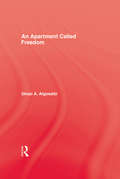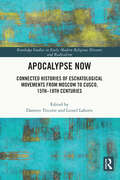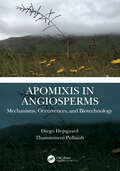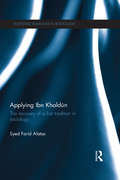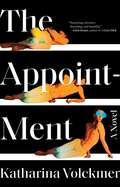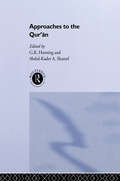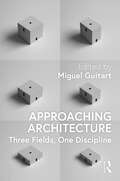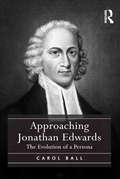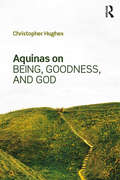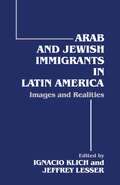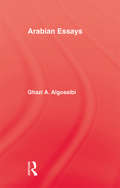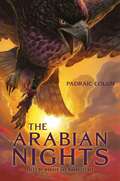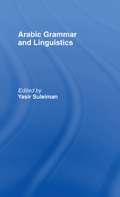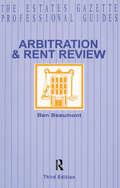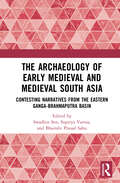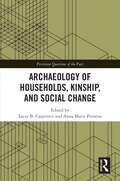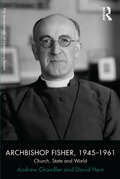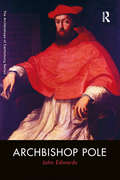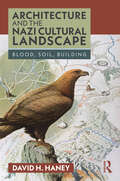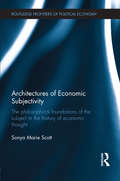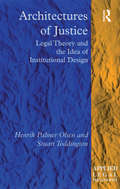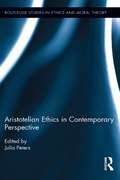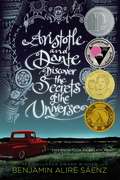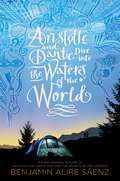Special Collections
Benetech’s Global Certified Accessible Titles
Description: Benetech’s GCA program is the first independent third-party EPUB certification to verify ebook accessibility. By creating content that is born accessible, publishers can meet the needs of all readers. Learn more: https://bornaccessible.benetech.org/
- Table View
- List View
Apartment Called Freedom
by AlgosaibiFirst published in 1996. Routledge is an imprint of Taylor & Francis, an informa company.
Apocalypse Now
by Lionel Laborie and Damien TricoireEschatology played a central role in both politics and society throughout the early modern period. It inspired people to strive for social and political change, including sometimes by violent means, and prompted in return strong reactions against their religious activism. From the fifteenth to the eighteenth century, numerous apocalyptical and messianic movements came to the fore across Eurasia and North Africa, raising questions about possible interconnections. Why were eschatological movements so pervasive in early modern times? This volume provides some answers to this question by exploring the interconnected histories of confessions and religions from Moscow to Cusco. It offers a broad picture of Christian and, to a lesser extent, Jewish and Islamic eschatological movements from the fifteenth to the eighteenth century, thereby bridging important and long-standing gaps in the historiography. Apocalypse Now will appeal to both researchers and students of the history of early modern religion and politics in the Christian, Jewish and Islamic worlds. By exploring connections between numerous eschatological movements, it gives a fresh insight into one of the most promising fields of European and global history.
Apomixis in Angiosperms
by Thammineni Pullaiah and Diego HojsgaardApomixis is a difficult-to-analyse trait with a complex molecular basis and a substantive effect on the biology of a species. Thus, apomixis is an interesting characteristic for researchers and students working in different fields of plant science and agriculture, and technological advances are enabling and making apomixis studies more common. Apomixis in Angiosperms: Mechanisms, Occurrences, and Biotechnology provides a systematic introduction to the mechanisms and developmental types of apomixis along with an overview of alternative methodologies for identifying apomixis and a detailed reassessment of the occurrences of apomictic species among angiosperm families. Optional methods are illustrated with examples of all types of apomixis and biological levels of analysis, i.e. cells, ovules, seeds and offspring. Data on apomictic species are collected in tables along with information on ploidy, type of apomixis and references. Occurrences of apomixis are briefly discussed in phylogenetic and evolutionary contexts. An outline of the molecular basis of apomixis in plants is presented, together with prospects and challenges that remain for its biotechnological exploitation. This book: Provides a systematic overview of the mechanisms of apomixis, developmental types and methodology for apomixis research. Reassesses apomixis at the species level in angiosperm families. Contains tables summarizing relevant information on apomixis. Analyses occurrences of apomixis in phylogenetic and evolutionary contexts. Outlines the molecular basis and biotechnological perspective of apomixis breeding. This book presents an accessible overview of apomixis research and a curated dataset of apomictic species. It serves as a reference book for students, researchers and citizen scientists interested in apomixis, as well as researchers, business innovators and entrepreneurs pursuing apomixis breeding. It can also be used as a textbook in graduate courses on plant reproduction. Diego Hojsgaard Taxonomy and Evolutionary Biology, Leibniz Institute of Plant Genetics and Crop Plant Research, Gatersleben, Germany, and Faculty of Exact, Chemical and Natural Sciences, National University of Misiones, Posadas, Argentina. Thammineni Pullaiah Department of Botany, Sri Krishnadevaraya University, Anantapur, India.
Applying Ibn Khaldūn
by Syed Farid AlatasThe writings of Ibn Khaldūn, particularly the Muqaddimah (Prolegomenon) have rightly been regarded as being sociological in nature. For this reason, Ibn Khaldūn has been widely regarded as the founder of sociology, or at least a precursor of modern sociology. While he was given this recognition, however, few works went beyond proclaiming him as a founder or precursor to the systematic application of his theoretical perspective to specific historical and contemporary aspects of Muslim societies in North Africa and the Middle East. The continuing presence of Eurocentrism in the social sciences has not helped in this regard: it often stands in the way of the consideration of non-Western sources of theories and concepts. This book provides an overview of Ibn Khaldūn and his sociology, discusses reasons for his marginality, and suggests ways to bring Ibn Khaldūn into the mainstream through the systematic application of his theory. It moves beyond works that simply state that Ibn Khaldūn was a founder of sociology or provide descriptive accounts of his works. Instead it systematically applies Khaldūn’s theoretical perspective to specific historical aspects of Muslim societies in North Africa and the Middle East, successfully integrating concepts and frameworks from Khaldūnian sociology into modern social science theories. Applying Ibn Khaldūn will be of interest to students and scholars of sociology and social theory.
The Appointment
by Katharina VolckmerFor readers of Ottessa Moshfegh and Han Kang, a whip-smart, darkly funny, and subversive debut novel in which a woman on the verge of major change addresses her doctor in a stream of consciousness narrative.In a well-appointed examination in London, a young woman unburdens herself to a certain Dr. Seligman. Though she can barely see above his head, she holds forth about her life and desires, her struggles with her sexuality and identity. Born and raised in Germany, she has been living in London for several years, determined to break free from her family origins and her haunted homeland. But the recent death of her grandfather, and an unexpected inheritance, make it clear that you cannot easily outrun your own shame, whether it be physical, familial, historical, national, or all of the above. Or can you? With Dr. Seligman&’s help, our narrator will find out. In a monologue that is both deliciously dark and subversively funny, she takes us on a wide-ranging journey from Hitler-centered sexual fantasies and overbearing mothers to the medicinal properties of squirrel tails and the notion that anatomical changes can serve as historical reparation. The Appointment is an audacious debut novel by an explosive new international literary voice, challenging all of our notions of what is fluid and what is fixed, and the myriad ways we seek to make peace with others and ourselves in the 21st century.
Approaches to the Qur'an
by G. R. Hawting and Abdul-Kader A. ShareefIn recent years, the study of the Qur'an and its interpretation has expanded to incorporate insights gained from historical, biblical, literary and critical studies. A variety of approaches to the Qur'an and the Muslim exegetical tradition are currently available. Approaches to the Qur'an consists of thirteen essays by leading scholars, both Muslim and non-Muslim, in the fields of qur'anic studies and Islamic studies. Taken together, they offer a sample of the aims, methods and topics of enquiry now being pursued. Each study has a full critical apparatus, and the book includes a consolidated bibliography which will be of great value to students and specialists.
Approaching Architecture
by Miguel GuitartThe study of the architectural discipline suffers from an increasing disconnect between its teaching and its professional practice. In this edited collection, 18 architectural voices address this disconnect by reflecting on the ways in which they exercise the architectural discipline in three ways: research, teaching, and practice. This book argues that the totality of activities encompassed by the architectural profession can be best fulfilled when reconsidering the critical interactions between these three fields in the everyday exercise of the profession. Split into three parts, "Architecture as Research," Architecture as Pedagogy," and "Architecture as Practice," each section focuses on one of these three dimensions while establishing continuity with the other two. In doing so, the book not only favors a more fulfilling interaction between academia and the profession but also reinforces the implementation of design theory and research in everyday teaching and practice. The contributions come from 18 teams of architects operating from geographically diverse locations, including Pezo von Ellrichshausen in Chile, Kengo Kuma & Associates in Japan, Barclay & Crousse in Peru, Shift in Iran, Heinrich Wolff in South Africa, and People’s Architecture Office in China, opening the design conversation to larger contexts and framing continuity and inclusion in time. Written for students, instructors, and practitioners alike, the inspiring reflections in this volume encourage readers to grow as architects and play an instrumental role in transforming the built environment.
Approaching Jonathan Edwards
by Carol BallExploring the inner motivations of one of America’s greatest religious thinkers, this book analyses the ways in which Jonathan Edwards' intense personal piety and deep experience of divine sovereignty drove an introverted intellectual along a course that would eventually develop into a mature and respected public intellectual. Throughout his life, the tension between his innately contemplative nature and the active demands of public office was a constant source of internal and public strife for Edwards. Approaching Jonathan Edwards offers a new theoretical approach to the study of Edwards, with an emphasis on his writing activity as the key strategy in shaping his legacy. Tracing Edwards’ strategic self-fashioning of his persona through the many conflicts in which he was engaged, the critical turning points in his life, and his strategies for managing conflicts and crises, Carol Ball concludes that Edwards found his place as a superlative contemplative apologist and theorist of experiential spirituality.
Aquinas on Being, Goodness, and God
by Christopher HughesThomas Aquinas is one of the most important figures in the history of philosophy and philosophical theology. Relying on a deep understanding of Aristotle, Aquinas developed a metaphysical framework that is comprehensive, detailed, and flexible. Within that framework, he formulated a range of strikingly original and carefully explicated views in areas including natural theology, philosophy of mind, philosophical psychology, and ethics. In this book, Christopher Hughes focuses on Aquinas’s thought from an analytic philosophical perspective. After an overview of Aquinas’s life and works, Hughes discusses Aquinas’s metaphysics, including his conception of substance, matter, and form, and his account of essence and existence; and his theory of the nature of human beings, including his critique of a substance dualism that Aquinas attributes to Plato, but is usually associated with Descartes. In the final chapters, Hughes discusses Aquinas’s account of the existence and nature of God, and his treatment of the problem of evil, as well as his ideas about the relation of goodness to being, choice, and happiness. Aquinas on Being, Goodness, and God is essential reading for students and scholars of Aquinas, and anyone interested in philosophy of religion or the history of medieval philosophy.
Arab and Jewish Immigrants in Latin America
by Jeffrey Lesser and Ignacio KlichThis collection of essays addresses various aspects of Arab and Jewish immigration and acculturation in Latin America. The volume examines how the Latin American elites who were keen to change their countries' ethnic mix felt threatened by the arrival of Arabs and Jews.
Arabian Essays
by AlgosaibiFirst Published in 1982. Routledge is an imprint of Taylor & Francis, an informa company.
The Arabian Nights
by Padraic ColumGenies, wishes, thieves, and treasure abound in these classic stories of magic and adventure from master storyteller Padraic Colum.
Every night for a thousand and one nights, Shahrazad begins to tell her husband the king a new tale but each night she stops before finishing. Why? Because the king has promised to kill her when the last one is over. However, her nightly stories—of Sinbad the Sailor, Ali Baba, and many other heroes and villains—are so enthralling that King Shahryar has to postpone her execution again and again...
Padraic Colum brings together a selection of the most amazing of the over 600 stories which Shahrazad told. Full of genies, flying carpets, and daring adventures, The Arabian Nights will captive a new audience and leave readers asking for one more story.
Arabic Grammar and Linguistics
by Yasir SuleimanThis book explores aspects of the Arabic Grammatical Tradition and Arabic Linguistics from both a theoretical and descriptive perspective. It also touches on issues of relevance to other disciplines, particularly Qur'anic exegesis and jurisprudence. The links between the fields of language and religion are historically strong in the Arabic and Islamic traditions as so much time and effort was spent by grammarians in interpreting the precise meanings of two of the main sources of Islamic jurisprudence - the Quran and Hadith. Prof Suleiman has assembled an international team of experts in this area and presents a thorough review of the sources and arguments. The book will be of interest to all students, researchers and teachers of Arabic Language and Culture.
Arbitration and Rent Review
by Ben BeaumontArbitration and Rent Review has become a standard work in the property world for guidance on rent review. In a clear style, the author examines the procedures that landlord and tenant should follow in order to agree a new rent or to have one decided by arbitration. By means of cases, he highlights the key areas of conflict that come before the courts, the contentious issues being introduced in the order in which they would be encountered by landlords or tenancts facing a review.
The Archaeology of Early Medieval and Medieval South Asia
by Swadhin Sen, Supriya Varma, and Bhairabi Prasad SahuThis book looks at the ways in which archaeological methods have been used in debates concerning the early medieval and medieval periods in South Asia. Despite the incorporation and use of archaeological data to corroborate historical narratives, the theories and methods of archaeology are largely ignored in and excluded from the dominating, institutionalized and hegemonic disciplinary discourses. The volume offers contesting insights, polemical narratives, and new data from archaeological contexts to initiate a debate on many foundational premises of archaeological and historical narratives. It focuses on the much-neglected region of the Eastern Ganga-Brahmaputra Basin as a spatial frame to do this, and studies themes such as spatial and temporal scales of concepts and methods, multi-scaler factors and processes of continuity and changes, the settlement archaeology on alluvial landscape, changing patterns of agrarian transformation, and material cultures, including coins, inscriptions, pottery, sculptures, in their contexts in sub-regional, regional and supra-regional intersections. As a crucial and unprecedented intervention in the study of the early medieval and the medieval periods, this volume will be useful for scholars and researchers of archaeology, ancient history, medieval history, water history, earth sciences, palaeoecology, historical ecology, epigraphy, art history, material culture studies, Indian history, and South Asian Studies in general.
Archaeology of Households, Kinship, and Social Change
by Lacey B. CarpenterArchaeology of Households, Kinship, and Social Change offers new perspectives on the processes of social change from the standpoint of household archaeology. This volume develops new theoretical and methodological approaches to the archaeology of households pursuing three critical themes: household diversity in human residential communities with and without archaeologically identifiable houses, interactions within and between households that explicitly considers impacts of kin and non-kin relationships and lastly change as a process that involves the choices made by members of households in the context of larger societal constraints. Encompassing these themes, authors explore the role of social ties and their material manifestations (within the house, dwelling or other constructed space), how the household relates to other social units, how households consolidate power and control over resources, and how these changes manifest at multiple scales. The case studies presented in this volume have broader implications for understanding the drivers of change, the ways households create the contexts for change, and how households serve as spaces for invention, reaction, and/or resistance. Understanding the nature of relationships within households is necessary for a more complete understanding of communities and regions as these ties are vital to explaining how and why societies change. Taking a comparative outlook, with case studies from around the world, this volume will inform students and professionals researching household archaeology and be of interest to other disciplines concerned with the relationship between social networks and societal change.
Archbishop Fisher, 1945–1961
by David Hein and Andrew ChandlerArchbishop Fisher’s archiepiscopate reflected the central issues of his time and place. It was Fisher who oversaw an immense programme of reforms which effectively recast the institutions of the Church of England for generations to come. It was Fisher who proved to be the essential architect, politician and diplomat behind the creation of a worldwide Anglican Communion. His determination to promote the development of relations with other churches produced a vital contribution to the cause of ecumenism, which culminated in his momentous meeting with Pope John XXIII. Archbishop Fisher was a vigorous participant in the questions which defined national and international life. This book explores Fisher’s influence on major contemporary issues and events, including divorce-law reform and capital punishment at home and the end of Empire and the most dangerous years of the Cold War abroad. This new biography establishes the continuing significance not only of the office of Archbishop in the Church but also of the Church at large in the tumultuous world of the later twentieth century. A final section of original source material includes letters, sermons and other writings bringing vividly to life the range and character of Fisher's public and private role.
Archbishop Pole
by John EdwardsThis fresh exploration of the life, work and writing of Archbishop Pole, focuses particularly on Pole’s final years (1556-58) as Archbishop of Canterbury. Fully integrating Pole’s English and Continental European experiences, John Edwards places these in their historical context and signposts lessons for contemporary issues and concerns. Stressing the events and character of Pole's 'English' life, up to his exile in the 1530s, as well as in his final years in England (1554-58), this book explores his close relationship, both genealogical and emotional, with Henry VIII and Mary I. Portraying Pole as a crucial figure in the Catholic-Protestant division, which still affects Britain today, this book details the first, and so far last, attempt to restore Roman Catholicism as the 'national religion' of England and Wales by telling the life-story of the hinge figure in forging English religious and political identity for several centuries. The final section of this book draws together important and illuminating source material written by Pole during his years as Archbishop of Canterbury.
The Archers: Home Fires at Ambridge
by Catherine Miller&‘Intriguing, comforting and endearingly familiar&’ Katie Fforde &‘The BBC&’s most downloaded radio show&’ The Guardian&‘Incredible legacy&’ ?The BBC &‘Longest running drama in the world&’ The i News It's 1941 and the war rumbles on. Nowhere is immune to the effects of war, not even Ambridge. But in England's favourite village, something else is occupying the residents... When a prominent villager dies, the main beneficiary's name is a mystery, and no one knows who is set to inherit the estate, cottage and all. The name is hidden within a locked box and the villagers much uncover the password to find out the name of the beneficiary. So when five people are each sent a packet of seeds, the mystery deepens - could the seeds be part of a clue? And can they all work together to unlock the mystery and to discover who is set to inherit?Beautifully produced, with stunning endpapers, this is the perfect read for all Archers fans.
Architecture and the Nazi Cultural Landscape
by David H. HaneyThis book traces cultural landscape as the manifestation of the state and national community under the Nazi regime, and how the Nazi era produced what could be referred to as a totalitarian cultural landscape. For the Nazi regime, cultural landscape was indeed a heritage resource, but it was much more than that: cultural landscape was the nation. The project of Nazi racial purification and cultural renewal demanded the physical reshaping and reconceptualization of the existing environment to create the so-called "new Nazi cultural landscape." One of the most important components of this was a set of monumental sites thought to embody blood and soil beliefs through the harmonious synthesis of architecture and landscape. This special group of "landscape-bound" architectural complexes was interconnected by the new autobahn highway system, itself thought to be a monumental work embedded in nature. Behind this intentionally aestheticized view of the nation as cultural landscape lay the all-pervasive system of deception and violence that characterized the emerging totalitarian state. This is the first historical study to consider the importance of these monumental sites together with the autobahn as evidence of key Nazi cultural and geographic strategies during the pre-war years. This book concludes by examining racial and nationalistic themes underlying cultural landscape concepts today, against this historic background.
Architectures of Economic Subjectivity
by Sonya ScottThe history of European economic thought has long been written by those seeking to prove or disprove the truth-value of the theories they describe. This work takes a different approach. It explores the philosophical groundwork of the theoretical structure within which economic subjects are presented. Demonstrating how the subjects of economic texts tend to be defined in and through their relationship to knowledge, this study addresses the epistemological constitution of subjectivity in economic thought.
Architectures of Justice
by Henrik Palmer Olsen and Stuart ToddingtonLaw can be seen to consist not only of rules and decisions, but also of a framework of institutions providing a structure that forms the conditions of its workable existence and acceptance. In this book Olsen and Toddington conduct a philosophical exploration and critique of these conditions: what they are and how they shape our understanding of what constitutes a legal system and the role of justice within it.
Aristotelian Ethics in Contemporary Perspective
by Julia PetersBy bringing together influential critics of neo-Aristotelian virtue ethics and some of the strongest defenders of an Aristotelian approach, this collection provides a fresh assessment of the strengths and weaknesses of Aristotelian virtue ethics and its contemporary interpretations. Contributors critically discuss and re-assess the neo-Aristotelian paradigm which has been predominant in the philosophical discourse on virtue for the past 30 years.
Aristotle and Dante Discover the Secrets of the Universe
by Benjamin Alire SáenzNow a major motion picture starring Max Pelayo, Reese Gonzales, and Eva Longoria!
A Time Best YA Book of All Time (2021)
This Printz Honor Book is a “tender, honest exploration of identity” (Publishers Weekly) that distills lyrical truths about family and friendship. Aristotle is an angry teen with a brother in prison. Dante is a know-it-all who has an unusual way of looking at the world. When the two meet at the swimming pool, they seem to have nothing in common. But as the loners start spending time together, they discover that they share a special friendship—the kind that changes lives and lasts a lifetime. And it is through this friendship that Ari and Dante will learn the most important truths about themselves and the kind of people they want to be.
Aristotle and Dante Dive into the Waters of the World
by Benjamin Alire SáenzThe highly anticipated sequel to the critically acclaimed, multiple award-winning novel Aristotle and Dante Discover the Secrets of the Universe is an achingly romantic, tender tale sure to captivate fans of Adam Silvera and Mary H.K. Choi.
In Aristotle and Dante Discover the Secrets of the Universe, two boys in a border town fell in love. Now, they must discover what it means to stay in love and build a relationship in a world that seems to challenge their very existence. Ari has spent all of high school burying who he really is, staying silent and invisible. He expected his senior year to be the same. But something in him cracked open when he fell in love with Dante, and he can’t go back. Suddenly he finds himself reaching out to new friends, standing up to bullies of all kinds, and making his voice heard. And, always, there is Dante, dreamy, witty Dante, who can get on Ari’s nerves and fill him with desire all at once.
The boys are determined to forge a path for themselves in a world that doesn’t understand them. But when Ari is faced with a shocking loss, he’ll have to fight like never before to create a life that is truthfully, joyfully his own.
